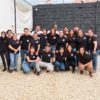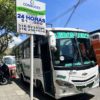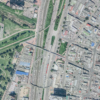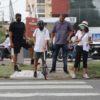The objective of this activity was to convene an exploratory meeting with key actors to review the relevance, functions, activities and priorities of a bike network in Latin America. We were effectively able to consult key actors and subject experts, discussing the steps to follow in the promotion of bikes in the region, project formulation and the relevance of creating a bike network. We also presented the Aburrá Valley Metropolitan Area (AMVA)’s programs promoting the use of bicycles in relation to the agreement signed with UN Habitat and Despacio has been cooperating in implementing the Safe Route to the WUF, aimed at integrating into this process.
Program Structure:
Part I: This part was led by Universidad de los Andes. They explained briefly the Regional Public Goods initiative of the Inter-American Development Bank. Afterwards, keeping in mind the host’s handling of bicycle topics,
AMVA joined the conversation, explaining the various initiatives underway promoting bicycle use under the UN Habitat agreement.
Part II: The second part of the activity was a participation exercise, divided into three blocks. The first block consisted of an online survey on a device that allowed participants to respond to a series of multiple-choice questions; in turn, it allowed them to view the survey results immediately. The first question asked what the function of the proposed bike network should be, and what issues it should work on. Although the device allowed these results to be viewed, the idea was to not show them at this point in the activity. The question was repeated at the end of the workshop and we analyzed the possible changes in participant answers due to the discussion generated by this exercise.
Initially, we included the following response options to the question regarding the principal function of the bike network:
- To inform.
- To integrate initiatives.
- To provide technical support.
- To unite forces for joint projects.
- To generate political pressure.
A second block involved setting up a few working groups, where participants could have more intimate discussions based on previously-generated questions that directed the discussion around the consolidation and functioning of the network.
The discussion topics at the different tables included:
1) The actions and steps to follow in consolidating a network,
2) Key actors that should be included in the process,
3) The tools, methods and resources available,
4) Possible sources of financing and network sustainability, among others.
Despacio led this activity, with Uniandes present at each table.
The last block consisted of a second electronic survey, which included the same question from the beginning of the activity, with the goal of identifying changes in answers from the discussion in the second block. This last survey included other questions, including:
- Relevance of the network
- Function of the network and the issues it should deal with
- What should the network be like? Online?
- Consultation with key players- which players?
- On what topics should each city work?
As a final product of this exercise, we obtained tools that will help to establish and develop a project, keeping in mind the experiences of users and international bicycling experts.








Comentarios recientes